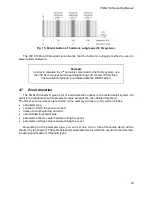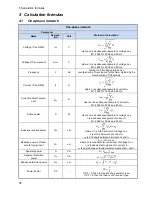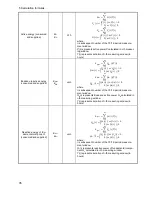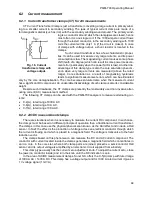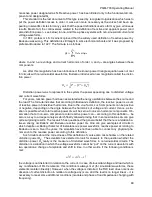
6 Power Quality - a guide
43
6 Power Quality - a guide
6.1
Basic Information
The measurement methodology is mostly imposed by the energy quality standards, mainly IEC
61000-4-30. This standard, introducing precise measurement algorithms, ordered analyzers mar-
ket, allowing customers to easily compare the devices and their results between the analyzers from
different manufacturers. Previously, these devices used different algorithms, and often the results
from measurements on the same object were completely different when tested with different de-
vices.
The factors behind growing interest in these issues have included wide use of electronic power
controllers, DC/DC converters and switched-mode power supplies, energy-saving fluorescent
lamps, etc., that is widely understood electrical power conversion. All of these devices had a ten-
dency to significantly deform the supply current waveform.
The design of switched-mode power supplies (widely used in household and industrial applications)
is often based on the principle that the mains alternating voltage is first rectified and smoothed with
the use of capacitors, meaning that it is converted to direct voltage (DC), and then with a high
frequency and efficiency is converted to required output voltage. Such a solution, however, has an
undesirable side effect. Smoothing capacitors are recharged by short current pulses at moments
when the mains voltage is close to peak value. From power balance rule it is known that if the
current is taken only at short intervals, its crest value must be much higher than in case it is taken
in a continuous manner. High ratio of current crest value to RMS value (a so-called crest factor)
and reduction of power factor (PF) will result in a situation in which in order to obtain a given active
power in a receiver (in watts), the power supplier must supply power greater than the receiver active
power (this is a so-called apparent power expressed in volt-amperes, VA). Low power factor causes
higher load on the transmission cables and higher costs of electricity transfer. Harmonic current
components accompanying such parameters cause additional problems. As a result, the electricity
suppliers have started to impose financial penalties upon the customers who have not provided
sufficiently high power factor.
Among entities that may be potentially interested in power quality analyzers are power utility
companies on one hand, (they may use them to control their customers), and on the other hand the
power consumers who may use the analyzers to detect and possibly improve the low power factor
and solve other problems related to widely understood power quality issues.
The power source quality parameters, as well as the properties of receivers, are described with
many various magnitudes and indicators. This section can shed some light on this area.
As already mentioned, the lack of standardization of measurement methods has caused signif-
icant differences in values of individual mains parameters calculated with various devices. Efforts
of many engineers resulted in IEC 61000-4-30 standard concerning power quality. For the first time,
this standard (and related standards) provided very precise methods, mathematical relations and
required measurement accuracy for power quality analyzers. Compliance with the standard (in par-
ticular, the class A) should be a guarantee of repeatable and almost identical measurement results
of the same magnitudes measured with devices from different manufacturers.
Summary of Contents for PQM-700
Page 85: ...85 Notes...


